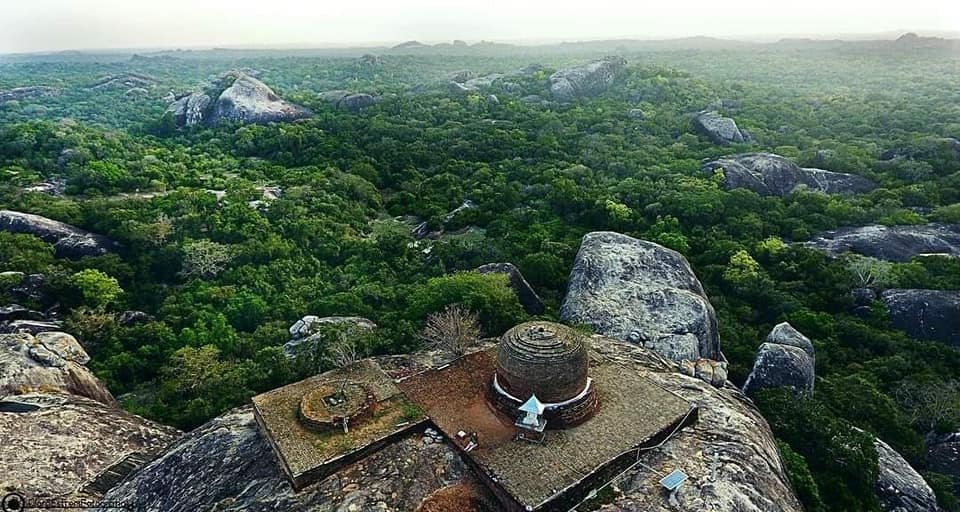Introduction
Kudumbigala Monastery is located in the middle of the Pottuvil Forest by the Panama – Kumana road, close to Okanda in Sri Lanka’s Eastern Province, Kudumbigala Monastery is a lesser-known but historically significant site that captivates visitors with its serenity, ancient ruins, and breathtaking panoramic views. It is close to the famed Kumana National Park, this ancient monastery is a must-visit destination for history buffs, adventure seekers, and spiritual travelers alike.
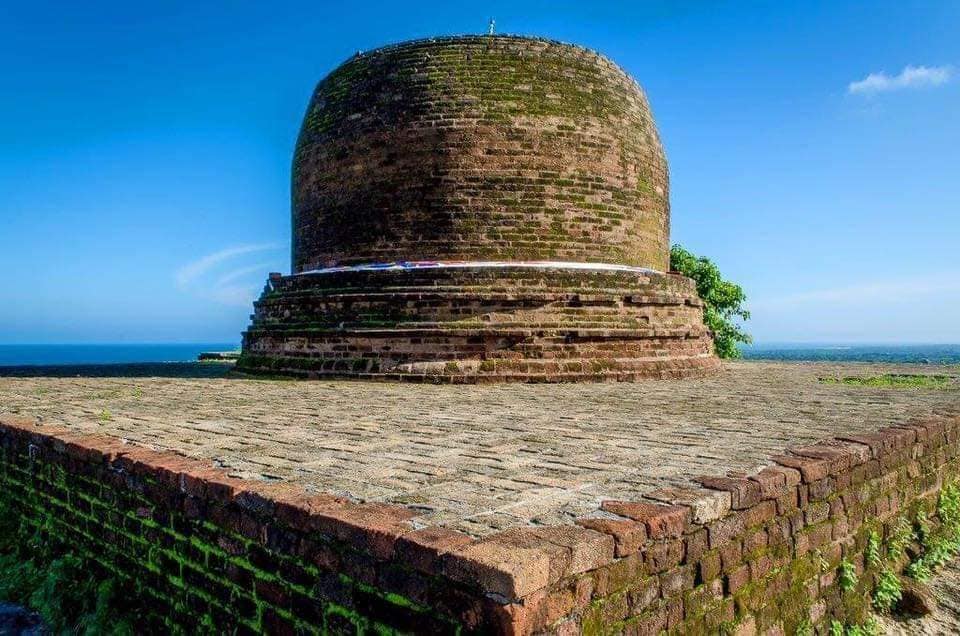
What is Kudumbigala Monastery?
Kudumbigala Monastery is an ancient Buddhist monastic complex dating back to the 3rd century BCE. Perched atop a rocky hill in the Kumana National Park, this serene site was once a sanctuary for Buddhist monks seeking solitude and meditation. The monastery is surrounded by lush forests, wildlife, and breathtaking views of the Indian Ocean, making it a perfect destination for nature lovers and history enthusiasts alike.
The name “Kudumbigala” translates to “rock of solitude,” reflecting its purpose as a place of retreat and spiritual reflection. Today, the monastery is a peaceful retreat for visitors looking to escape the hustle and bustle of modern life.
History and Significance
Kudumbigala Monastery dates back to 246 BC during the reign of King Devanampiya Tissa, making it one of the oldest monastic complexes in Sri Lanka. The monastery was established as a retreat for Buddhist monks seeking solitude for meditation. The site is home to a collection of over 200 caves, which were used by monks for centuries. Some of these caves still retain ancient Brahmi inscriptions and rock carvings, offering a glimpse into Sri Lanka’s rich Buddhist heritage.
One of the most remarkable structures in Kudumbigala is the cylindrical-shaped stupa, believed to be the only one of its kind in Sri Lanka. Unlike traditional stupas, which are bell-shaped, this unique design adds to the mystique of the monastery. The site remained hidden from the public eye for many years due to its remote location and dense jungle surroundings, but it has recently gained popularity among adventure travelers and history enthusiasts.
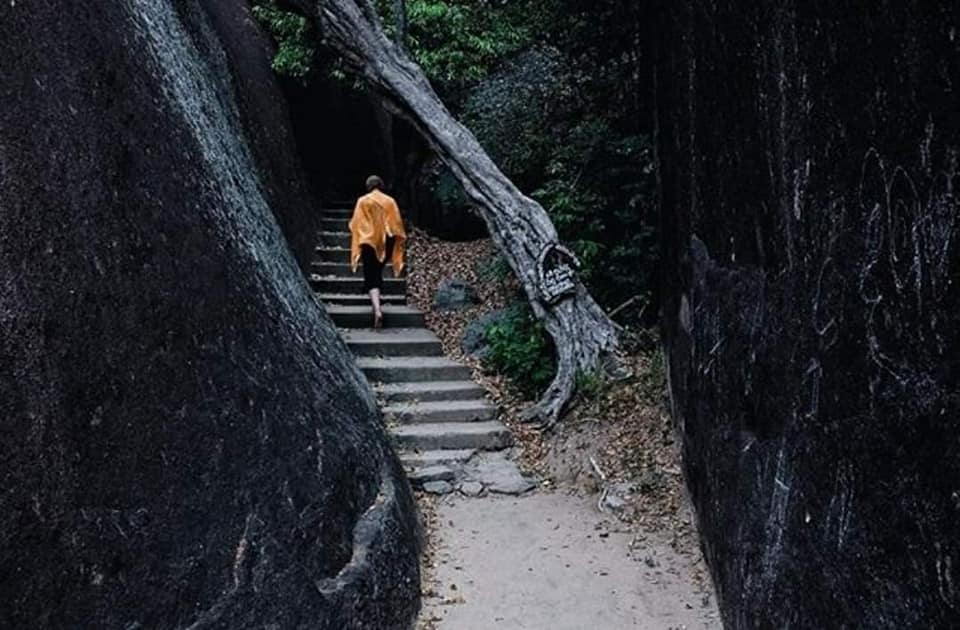
Why Visit Kudumbigala Monastery?
1. Historical Significance
Kudumbigala Monastery is one of the oldest Buddhist sites in Sri Lanka, with a history spanning over 2,000 years. It is believed to have been established during the reign of King Devanampiya Tissa, who introduced Buddhism to the island. The monastery served as a refuge for monks during times of political unrest and foreign invasions.
2. The Unique Cylindrical Stupa
Unlike traditional stupas, Kudumbigala’s cylindrical stupa stands out as a rare architectural marvel. The structure, partially restored, serves as a reminder of the monastery’s historic and spiritual significance.
3. Spiritual Retreat
The monastery’s remote location and tranquil atmosphere make it an ideal spot for meditation and self-reflection. Visitors can experience the same sense of peace and solitude that ancient monks once sought.
4. A Scenic Hike Through the Jungle
Upon arriving at Kudumbigala, visitors must embark on a moderately challenging hike to explore the ruins. The trail is surrounded by dense forests, with occasional wildlife encounters, including monkeys, peacocks, and even elephants in the distance. The path is rocky and steep in some places, so wearing comfortable shoes and carrying water is recommended.
5. Off-the-Beaten-Path Adventure
Unlike more popular tourist destinations in Sri Lanka, Kudumbigala remains relatively undiscovered. This makes it a perfect destination for travelers looking to explore a less crowded and more authentic side of the island.
6. Panoramic Views from the Summit
One of the highlights of visiting Kudumbigala is the breathtaking view from the summit. After a short but steep climb, visitors are rewarded with a 360-degree panoramic view of the surrounding wilderness, the distant coastline, and the lush greenery of Kumana National Park. Sunset is a particularly magical time to be at the top, as the sky transforms into vibrant hues of orange and pink.
What can you see there
Eight ruins of Dagab can be seen at Kudumbigala. It is believed a large number of Dagab have been built within the monastery premises, giving Kudumbigala its other name ‘Chethiya Pabbatha’. A large number of pillars, columns and ponds carved into the rocky compound of the monastic complex dates back to the seventh century AD. There is evidence to suggest that the caves may have been used as a modest hermitage till the early 17th century AD. It is significant to note that the remains of the monastery had barely been disfigured in any way following its abandonment.
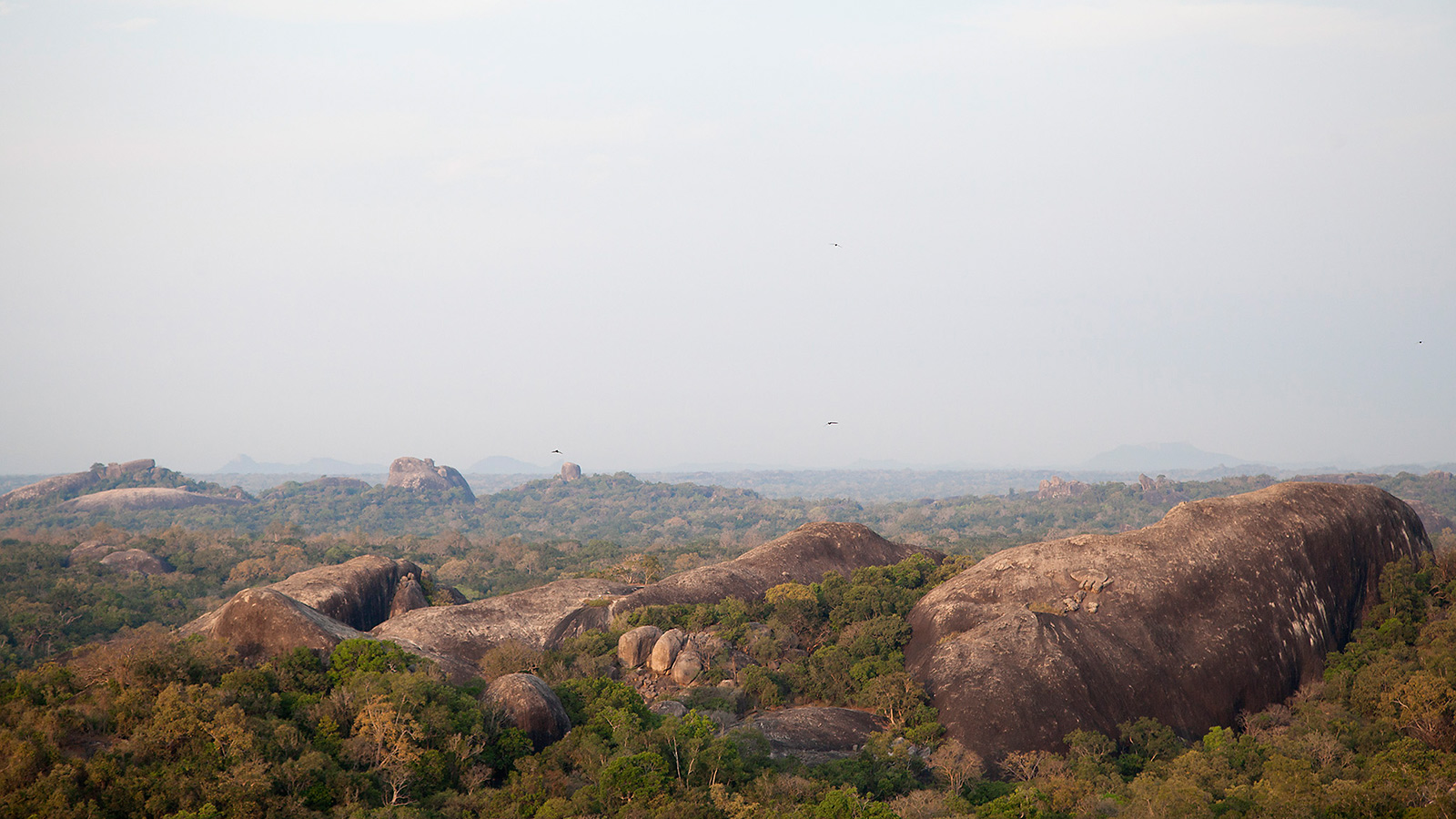
Things to Do at Kudumbigala Monastery
-
Explore the Ancient Caves
The monastery complex consists of numerous caves that were once used as meditation chambers by Buddhist monks. These caves are adorned with ancient inscriptions and carvings, offering a glimpse into the lives of the monks who lived here centuries ago.
-
Climb to the Summit
The highlight of a visit to Kudumbigala is the climb to the top of the rocky hill. From the summit, you’ll be rewarded with breathtaking views of the surrounding forests, Kumana National Park, and the Indian Ocean.
-
Wildlife Spotting
The area around Kudumbigala is rich in biodiversity. Keep an eye out for elephants, deer, monkeys, and a variety of bird species as you explore the monastery and its surroundings.
-
Meditation and Reflection
The peaceful atmosphere of Kudumbigala makes it an ideal place for meditation and introspection. Find a quiet spot, soak in the serenity, and connect with your inner self.
-
Visit Nearby Attractions
Combine your visit to Kudumbigala with a trip to Kumana National Park, known for its birdlife and wildlife safaris, or the pristine beaches of Panama and Arugam Bay.
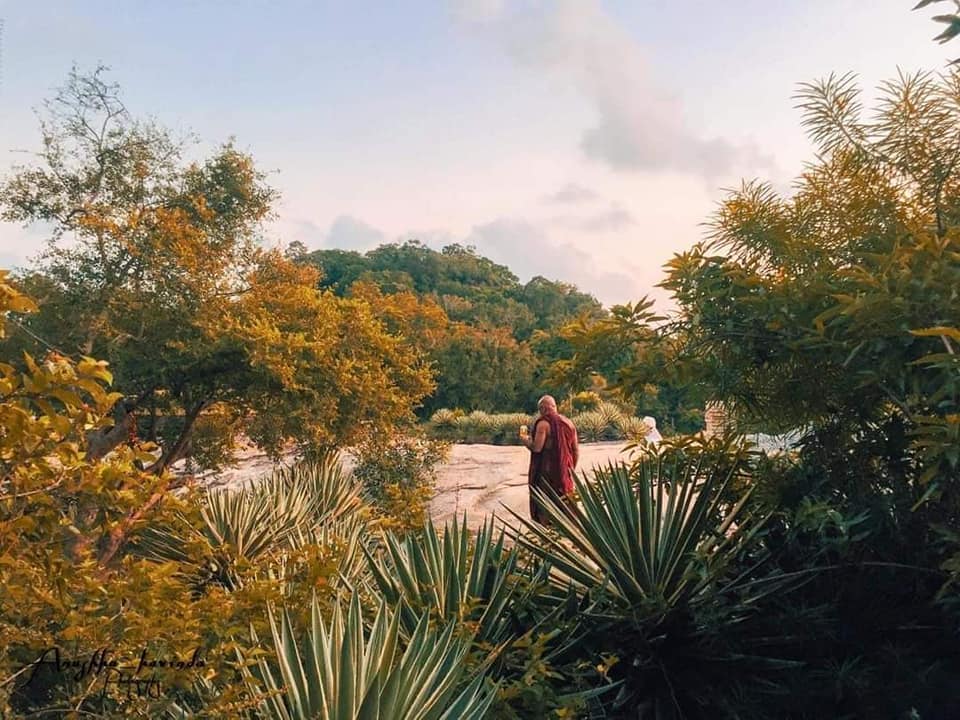
Story of the Maithree Upasaka
After the era of the Arhats, this land must have been reclaimed by the forest. Around 1942, a devoted layman named Upasaka Maithri journeyed through this vast wilderness. Born into a non-religious background, he later embraced Buddhism and ventured alone into this great forest. There, he cleared the Sudarshan Cave, dedicating his life to meditation and preaching.
Later, at the invitation of Upasaka Maithri, Tambugala Anandasiri Thero—predecessor of the present Kudumbigala Novoda—arrived to continue the spiritual legacy.
For those interested in Upasaka Maithri’s extraordinary experiences, his book provides valuable insights into his twenty-five years of life here. His initial efforts included securing and restoring about ten caves, transforming them into meditation chambers and preaching halls. The site is also home to over ten inscriptions dating back to the pre-Christian era.
Originally from Negombo and raised Catholic, Upasaka Maithri worked for the Ceylon Railway before uncovering the hidden history of the Sinhalese—a revelation that changed his life forever. In 1954, he arrived at Kudumbigala Monastery, where he diligently restored the area, lived in deep meditation, and safeguarded its heritage for future generations. He remained there until his passing on September 10, 1971, and is now revered as the guardian of this historic site.
As per his wishes, his remains were preserved in a rock cave until 1994, when LTTE terrorists desecrated the site, shattering the glass display and scattering his remains into the jungle. Thanks to the efforts of a dedicated researcher, his remains were later recovered, ensuring his legacy endures.
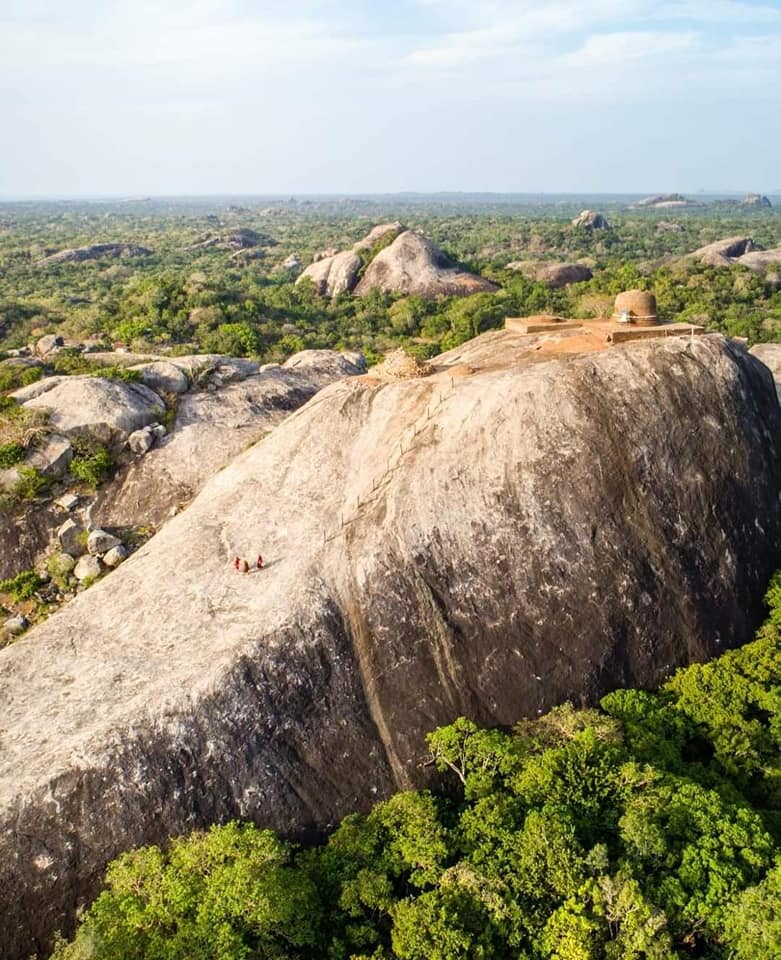
How to Get to Kudumbigala Monastery
Kudumbigala Monastery is located near the village of Panama, approximately 20 kilometers from the town of Pottuvil in the Ampara District. Here’s how you can reach this hidden treasure:
From Colombo: The journey takes about 8-9 hours by car. You can take the Southern Expressway to Hambantota and then drive via Pottuvil to Panama.
From Arugam Bay: Arugam Bay is just 30 kilometers away, making it a convenient base for visiting Kudumbigala. The drive takes about 1 hour.
From Kumana National Park: If you’re visiting Kumana, Kudumbigala is a short detour and well worth the visit.
Tips for Visiting Kudumbigala Monastery
Best Time to Visit: The ideal time to visit Kudumbigala is during the dry season (May to September), when the weather is pleasant and the trails are easier to navigate.
What to Wear: Wear comfortable clothing and sturdy footwear, as the hike to the monastery can be rocky and uneven.
What to Bring: Carry plenty of water, sunscreen, and insect repellent. A hat and sunglasses are also recommended.
Respect the Site: Kudumbigala is a sacred site, so be mindful of your behavior. Dress modestly and avoid loud noises or disruptive behavior.

Nearby Attractions
Kumana National Park: A haven for birdwatchers and wildlife enthusiasts, Kumana is just a short drive from Kudumbigala.
Panama Beach: A pristine beach perfect for relaxation after a day of exploring.
Arugam Bay: Known for its world-class surfing spots and laid-back vibe.
Why Kudumbigala Should Be on Your Sri Lanka Itinerary
Kudumbigala Monastery is more than just a historical site; it’s a place where history, spirituality, and nature come together in perfect harmony. Whether you’re a history buff, a nature enthusiast, or simply looking for a peaceful retreat, Kudumbigala offers an unforgettable experience that will leave you feeling refreshed and inspired.
So, the next time you’re planning a trip to Sri Lanka, make sure to include Kudumbigala Monastery in your itinerary. This hidden gem in Panama, Kumana, is waiting to be discovered!

